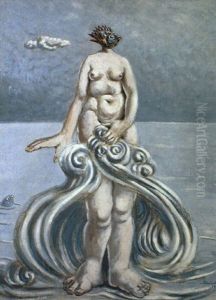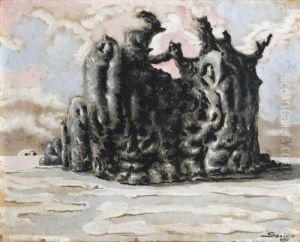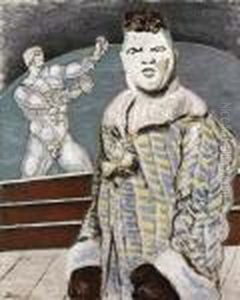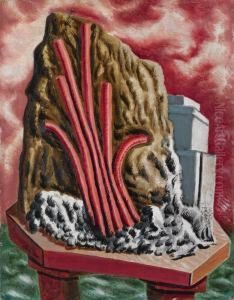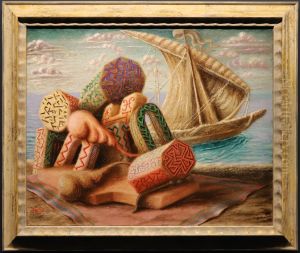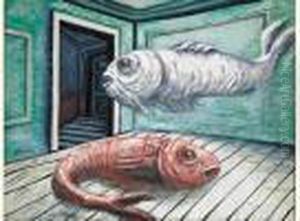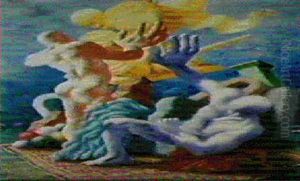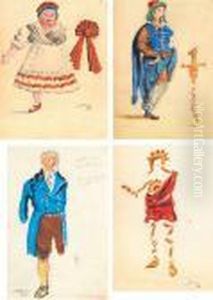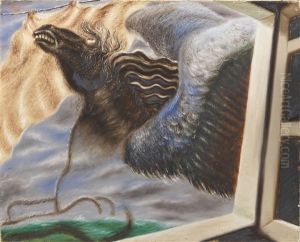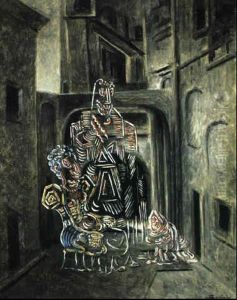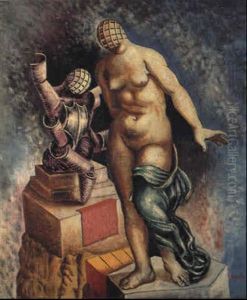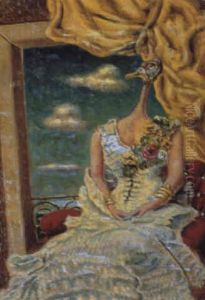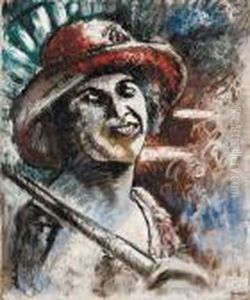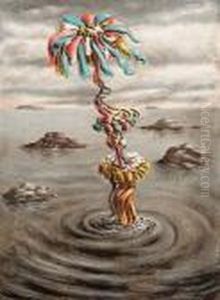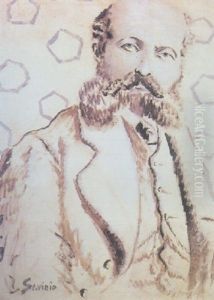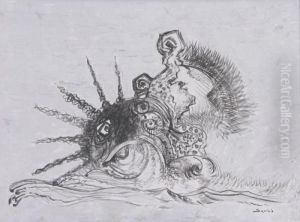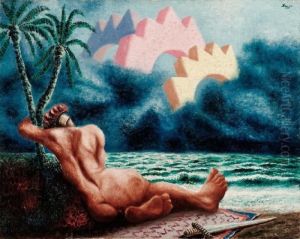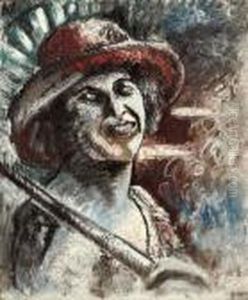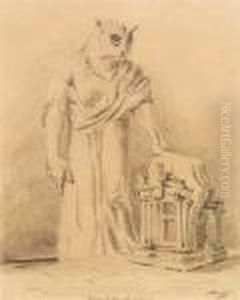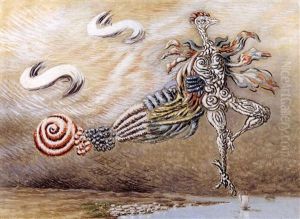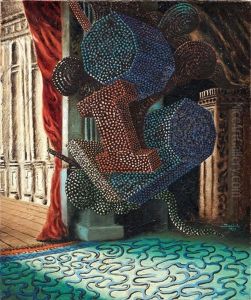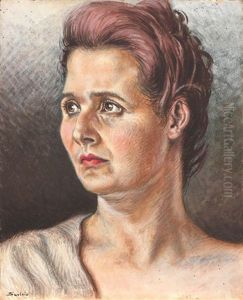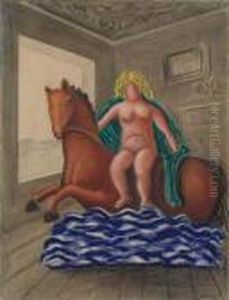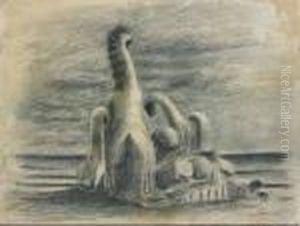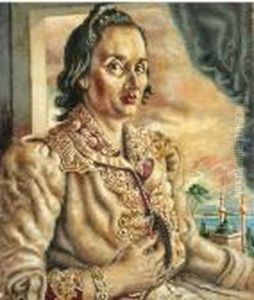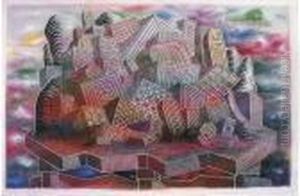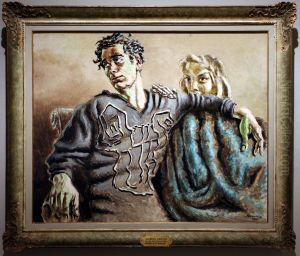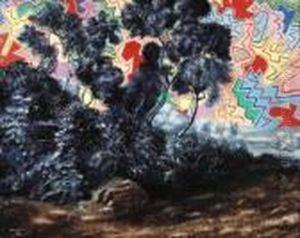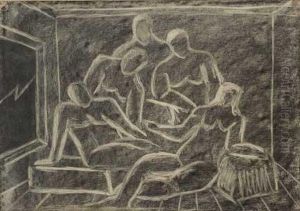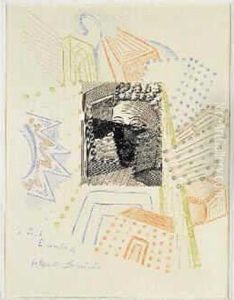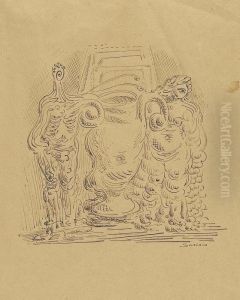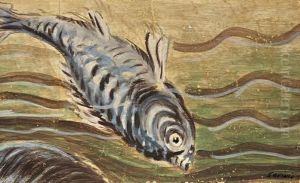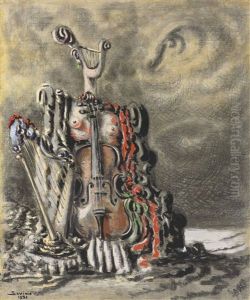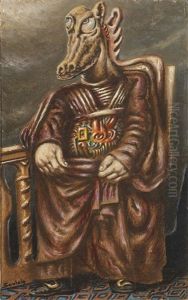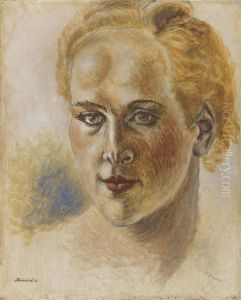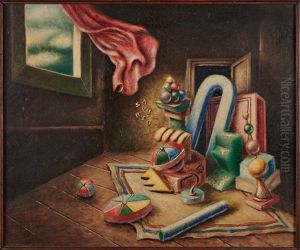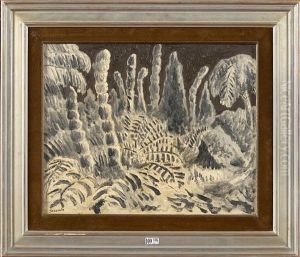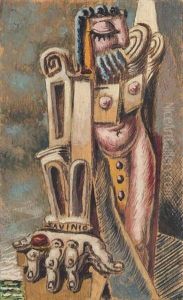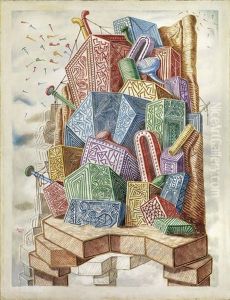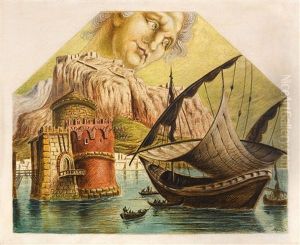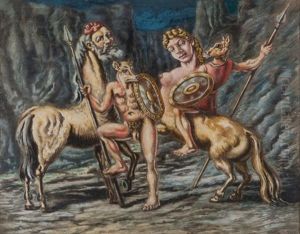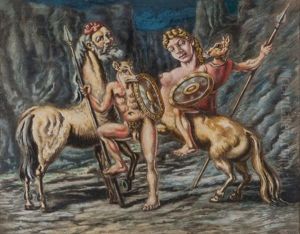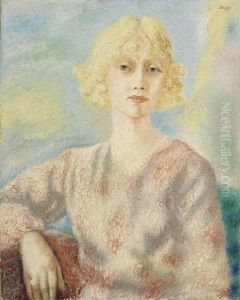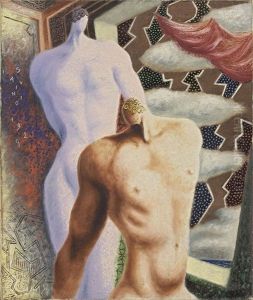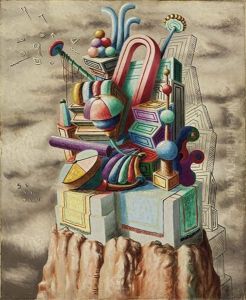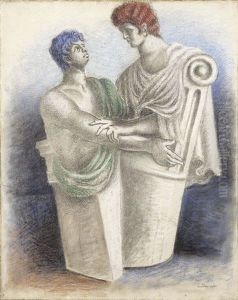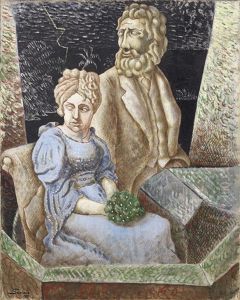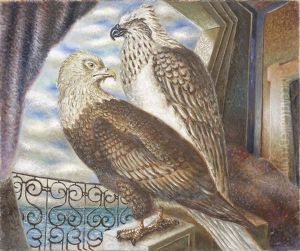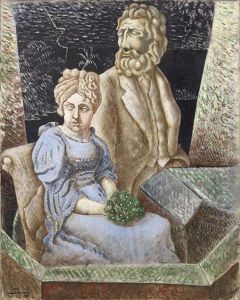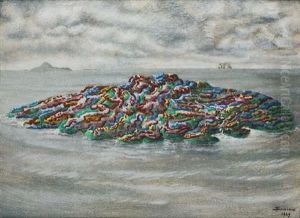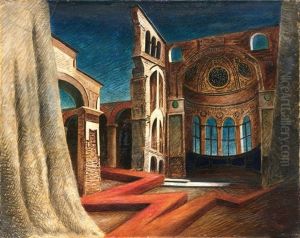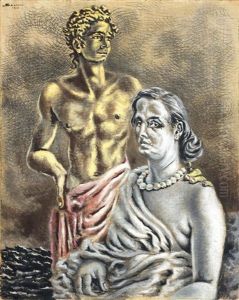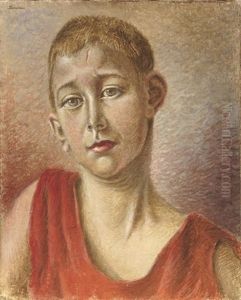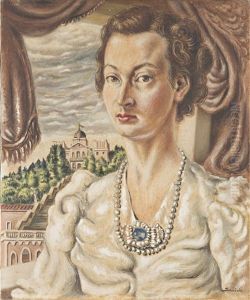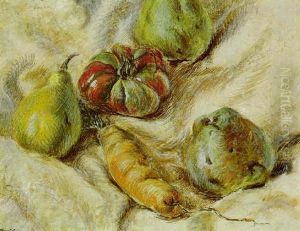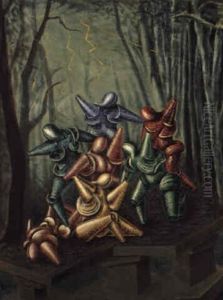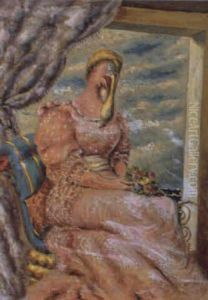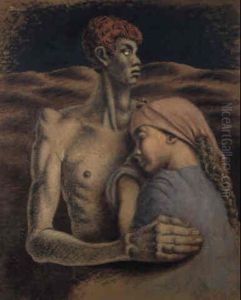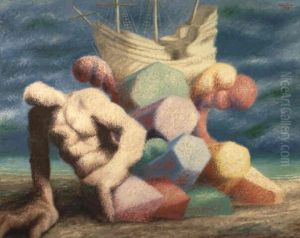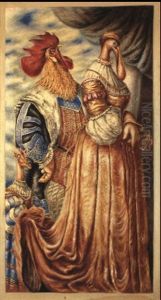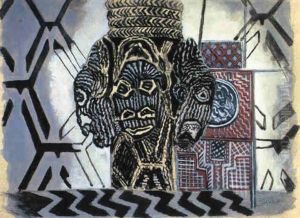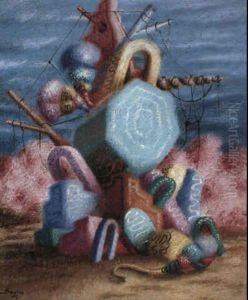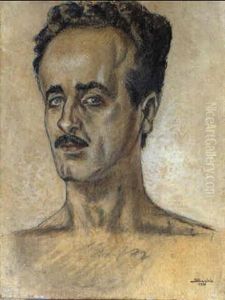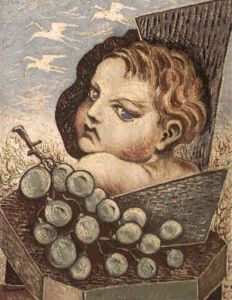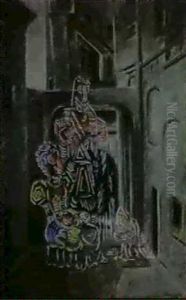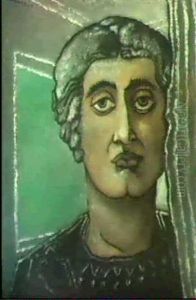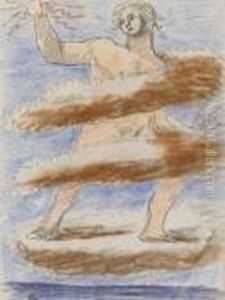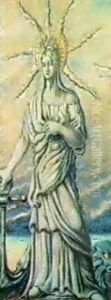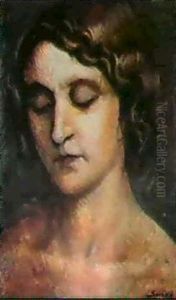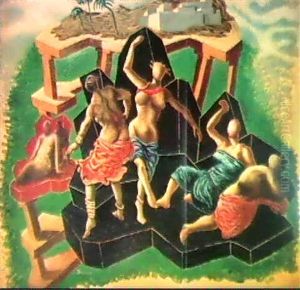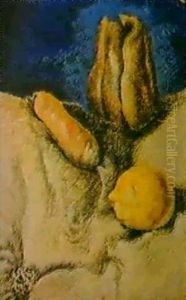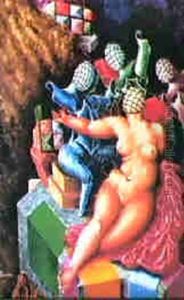Alberto Savinio Paintings
Alberto Savinio, born Andrea Francesco Alberto de Chirico on August 25, 1891, in Athens, Greece, was an Italian writer, painter, musician, journalist, essayist, playwright, set designer, and composer. He was the younger brother of the more famous Surrealist painter Giorgio de Chirico. Despite being less known, Savinio was a multifaceted artist and intellectual whose work explored the intersection of modernist tendencies and classical themes, often imbued with a sense of irony and a questioning of identity.
Savinio's family moved to Munich in 1906, which allowed him to enroll at the Academy of Fine Arts. There, he was exposed to the works of philosophers like Nietzsche and Schopenhauer, as well as the music of Wagner, all of which had a profound impact on his artistic development. His early work was influenced by Symbolism and, later, by his brother's Metaphysical painting, with whom he shared a close and complex relationship.
During World War I, Savinio served in the Italian army, and after the war, he lived in Paris, where he became associated with the avant-garde movements of the time, including Surrealism, though he never fully subscribed to any singular art movement. In Paris, Savinio also began his career as a writer, contributing to various journals and publishing his first works. His writings often dealt with themes of mythology, the unconscious, and the absurdities of modern life, and were marked by a distinctive narrative voice that combined poetic insight with satirical wit.
In the 1920s and 1930s, Savinio continued to produce paintings that were characterized by dreamlike atmospheres, mythological figures, and a sense of dislocation in time and space. His work often reflected a fascination with the ancient world, as well as a critical eye on contemporary society. In addition to painting and writing, Savinio was also involved in music and theater, composing operas and ballets, and designing sets and costumes for stage productions.
After World War II, Savinio’s work gained more recognition in Italy. He was invited to exhibit at the Venice Biennale, and his paintings began to be appreciated for their unique contribution to modern art. Despite his diverse talents and output, Savinio remained overshadowed by his brother Giorgio de Chirico throughout his life and it was only posthumously that his work began to be more widely studied and exhibited.
Alberto Savinio died on May 5, 1952, in Rome, leaving behind a rich legacy as a Renaissance man of the 20th century, whose work continues to be of interest for its crossing of boundaries between various art forms and its exploration of the human psyche.
